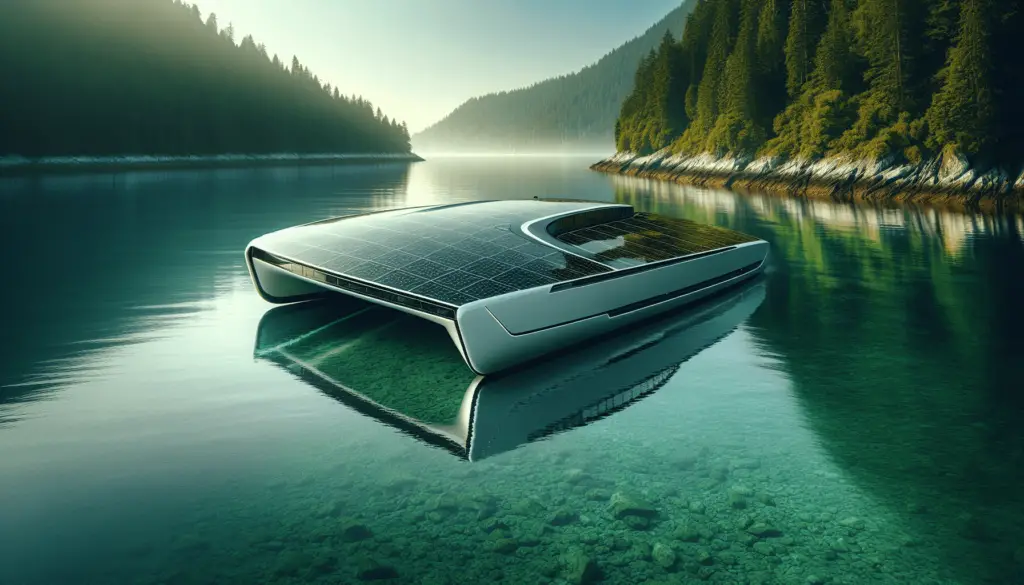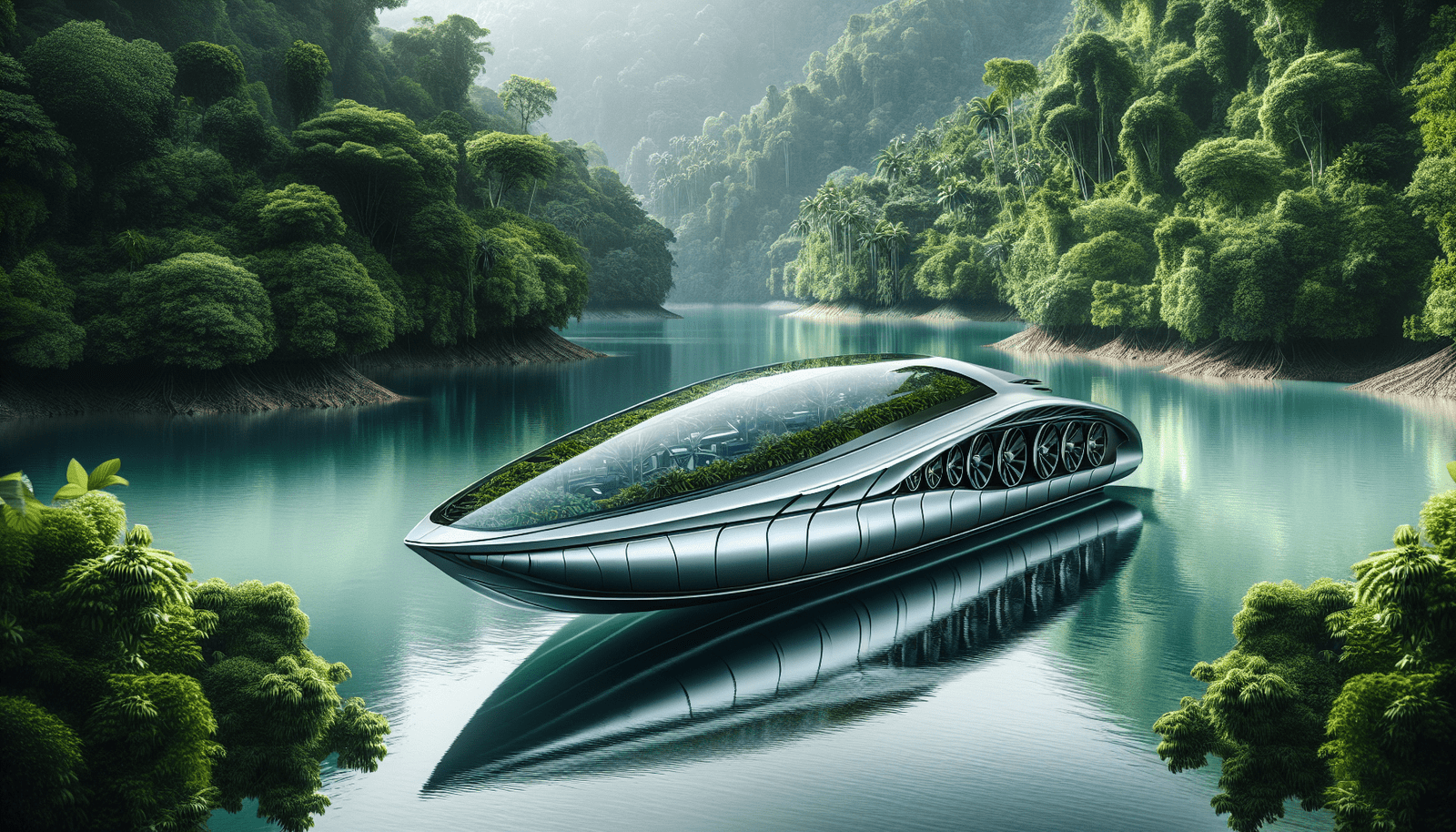If you’ve ever wondered how boat designs can contribute to our efforts in preserving the environment, then “The Science Behind Eco-Friendly Hull Design for Boats” is the perfect read for you. This article explores how modern marine engineers are using sophisticated scientific methodologies to develop boat hull designs that minimize environmental impact. Expect to understand how various elements such as hull shape, material selection, and hull coatings can dramatically impact fuel efficiency, carbon emissions, and the overall eco-friendliness of your boat. So, sit back and get ready to discover how your maritime adventures can be greener and more sustainable than ever.

Understanding the Role of the Hull in Boat Design
When it comes to boat design, understanding the role of the hull is paramount. It’s not just the body of the boat; it’s the basis of its functionality and efficiency.
Primary functions of the hull
As the main structure of the boat, the hull provides storage, crew living / working spaces, and houses various types of machinery and equipment. It’s not just about supporting weight either; the shape and design of the hull also play a huge part in determining how the boat moves through water, what speed it can reach, and even how smooth the boat ride can be.
Different types of hulls and their characteristics
There’s no one-size-fits-all when it comes to boat hulls, and each type serves a different purpose. Flat bottom hulls, for instance, are great for calm water and maximizing stability at rest. V-shaped hulls, on the other hand, are designed to cut through rough water with greater ease. Catamaran hulls, with two separate hull sections, are known for their high speeds and ample deck space.
How the hull affects the boat’s efficiency
The hull’s shape, size, and material determine the boat’s ability to move through the water and, as a consequence, its efficiency. The better the hull is at reducing water resistance and maintaining stability, the less energy is needed to move the boat, making it more fuel-efficient.
Traditional Hull Designs and Their Environmental Impact
Boats have been around for centuries, but traditional hull designs and materials used are not particularly eco-friendly, and they can adversely affect our environment, especially marine life.
Overview of standard hull materials
Traditional boat hull materials typically include wood, steel, and fiberglass – chosen for their strength and resistance to wear and tear. Over the years, the introduction of plastic materials revolutionized hull design due to their lightweight and molding properties.
How traditional hull designs can contribute to environmental pollution
Unfortunately, traditional hull materials such as plastic and fiberglass can contribute to environmental pollution. When these boats eventually become obsolete and are discarded or broken down, their non-decomposable nature poses a significant threat to coastal ecosystems.
Environmental hazards from hull maintenance and boat operation
Boat operation and maintenance practices can also harm the environment. Painting, cleaning, and repairing hulls often involve toxic solvents and antifouling paints, which can leach into the water and impact marine life. Diesel-powered boats also contribute to air and water pollution through their emissions.
Fundamental Concepts of Eco-Friendly Hull Design
Designing boat hulls with environmental sustainability in mind involves acknowledging and incorporating several fundamental concepts.
The importance of aerodynamics in hull design
Aerodynamics plays a central role in eco-friendly hull designs. This focuses on reducing air resistance and improving the efficiency of movement, ultimately reducing fuel consumption and emissions.
The role of buoyancy and stability
Buoyancy and stability are equally vital. These elements ensure that the boat stays afloat and balanced in the water, which is critical for the boat’s overall operation and the safety of those onboard.
Reducing drag for improved efficiency
Reducing drag – the resistance a boat encounters when moving through water – is a key aspect of efficient hull design. The less resistance, the less power is needed to propel the boat, resulting in less fuel used and fewer emissions.
Materials Used in Eco-Friendly Boat Hulls
The choice of materials can significantly influence the ecological footprint of a boat. In the quest for eco-friendly alternatives, certain materials are proving particularly valuable.
Discussion on sustainable materials
Sustainable materials refer to those which are readily available and cause minimal harm to the environment throughout their life-cycle. They may be natural materials, like wood from managed forests or plant-based materials, or they could be man-made, like recycled plastics.
The use of recyclable materials
Recyclable materials are a great option when it comes to reducing the environmental impact of boat hulls. Using recycled plastic or aluminum, for instance, helps avoid waste ending up in landfills or our oceans.
Benefit of composite materials in eco-friendly hull design
Composite materials, combining two or more different materials, are becoming increasingly popular for eco-friendly hull design. They offer improved performance properties, durability, and the potential to blend recyclable and renewable resources.
Exploring biodegradable materials for hull construction
Biodegradable materials like biopolymers, made from plant or animal sources, are another promising option. Upon disposal, these materials decompose naturally, significantly reducing the pollution associated with end-of-life disposal of boats.

The Use of Hydrodynamics in Eco-Friendly Hull Design
Hydrodynamics, or the study of liquids in motion, plays a crucial role in designing eco-friendly hulls that reduce water resistance and improve efficiency.
Understanding hydrodynamics
Hydrodynamics involves understanding and manipulating how water flows around a hull, with the goal of minimizing resistance. This reduces the effort required to move the boat through water, ultimately saving fuel and reducing emissions.
Benefit of minimizing water resistance
Minimizing water resistance reduces drag and contributes to more efficient boat operation. Efficient hulls can reduce fuel consumption by up to 50%, leading to significant cost and environmental savings.
The effect of wave-making resistance on fuel efficiency
Wave-making resistance, caused by the hull pushing water out of its way, can create waves that drain energy from the boat. So wave-minimizing hull designs can contribute significantly to overall fuel efficiency.
Implementing hydrodynamic hull shapes
There are various ways to implement hydrodynamic principles in hull design – for instance, designing sleek, streamlined hull shapes or adding features like bulbous bows to decrease resistance.
Innovation in Eco-Friendly Hull Design
Innovation is key in the move towards more sustainable, eco-friendly boat hulls. Various strategies and technologies are pushing the boundaries of what’s possible.
Case studies of successful eco-friendly hull design projects
Across the world, numerous projects showcase the power of eco-friendly hull design. These include solar-powered boats, boats made entirely from recycled plastic, and high-tech racing yachts employing the latest eco-friendly materials and design concepts.
New technologies contributing to efficient hull design
Technologies such as AI and machine learning are now used in hull design to optimize shape, minimize resistance, and improve fuel efficiency. Meanwhile, advancements in renewable energy technology are making it increasingly feasible to power boats with solar or wind power.
The role of computer-aided design (CAD) in eco-friendly hull design
Computer-aided design (CAD) software has greatly expedited the hull design process. It allows designers to create precise 3D models, simulate various conditions, and optimize design elements for improved performance and efficiency.
The potential of 3D printing in hull manufacturing
3D printing in hull manufacturing holds great promise, enabling highly precise, waste-efficient production and the use of novel, eco-friendly materials. It could also facilitate more complex and innovative hull shapes and structures.
Biofouling and Eco-Friendly Hull Design
Biofouling, or the accumulation of marine organisms on the hull, poses a significant challenge in boat maintenance and can have environmental consequences.
Understanding the challenge of biofouling
Biofouling can cause drag, reducing fuel efficiency and increasing emissions. Moreover, it can lead to the introduction of invasive species in new environments, threatening local ecosystems.
Environmental impact of common anti-fouling strategies
Many traditional strategies for combating biofouling, such as toxic anti-fouling paints, can harm marine life and pollute the environment when they leach into the water.
Eco-friendly solutions for preventing biofouling
Fortunately, eco-friendly alternatives for preventing biofouling are emerging, like anti-fouling coatings that use non-toxic materials or physical structures to deter organism attachment.
Regulatory Guidelines and Standards for Eco-Friendly Hull Design
Implementation of eco-friendly hull design is reinforced by various regulatory guidelines and standards aiming to minimize environmental impact and promote sustainability in the maritime industry.
Overview of applicable maritime laws and environmental regulations
Maritime laws and environmental regulations set standards for emission levels, fuel efficiency, waste disposal, and more. Understanding and adhering to these regulations is important for boat manufacturers and operators.
Standards for fuel efficiency and emissions
Fuel efficiency and emission standards play a critical role in driving innovation towards eco-friendlier designs. They also provide a benchmark to measure and compare the environmental impact of different boats.
Influence of regulations on the future of eco-friendly hull design
Evolving regulations and standards will continue to shape the future of eco-friendly hull design. They encourage the maritime sector to adopt sustainable practices and spur innovation in hull design technologies.
Benefits of Eco-Friendly Boat Hull Design
Eco-friendly hull designs bring a host of benefits, from improved fuel efficiency and cost savings to reduced environmental impact and enhanced brand reputation.
Improved fuel efficiency and cost-savings
Eco-friendly hull designs can significantly improve fuel efficiency, potentially saving boat operators large amounts of fuel costs over a boat’s lifespan.
Reduced environmental impact
From more sustainable materials to efficient design features, eco-friendly hulls can significantly reduce a boat’s environmental impact, helping protect our precious oceans and marine life.
The positive marketing and brand image of owning an eco-friendly boat
By opting for an eco-friendly hull design, boat manufacturers and owners signal their commitment to sustainability. This can boost their brand reputation and appeal to increasingly eco-conscious consumers.
Future of Eco-Friendly Hull Design
As concerns over the environmental impact of traditional boat-building practices rise and advancements in technology continue, the future of eco-friendly hull design looks promising.
Trends and emerging technologies in eco-friendly hull design
Emerging technologies and design trends like AI-supported design, advanced hydrodynamic modeling, and sustainable materials are likely to shape the future of eco-friendly hull design.
The role of sustainability in maritime transportation
As society increasingly prioritizes sustainability, the maritime transportation industry must respond. The case for eco-friendly hull design is not only environmental, but also economic, and indeed critical for the industry’s long-term viability.
Potential challenges and solutions in expanding eco-friendly hull design
While the shift towards eco-friendly hull design is encouraging, challenges remain. These include cost concerns, technical limitations, and the need for systemic changes in the boat-building industry. However, with continued innovation and a shared commitment to preserving our oceans, these are obstacles we can overcome.

